Being creative with a tutu-wearing two year old on your back
/An interview with Amber Moffat by Ant Gray
After being an artist, a teacher and working for many years in arts education, Amber Moffat is pursuing her dream of becoming a children’s book author and illustrator. We talk about her practice and her kids, getting over art school, rats joined by their tails, flying snails, and a little known species of unicorn.
Congratulations on winning a place in the Australian Society of Authors' Emerging Writers’ and Illustrators’ Mentorship Program. That’s so exciting!
Thank you! I'm really thrilled about it.
By the way, while we’re talking, I have two-year-old in a tutu on my back, doing my hair and tipping the contents of my handbag on me.
(Laughs) I knew someone who told me she wrote her entire thesis while her daughter sat behind her kicking her in her back, going “Mummy, mummy, mummy, mummy when are you going to finish?!” How much of your work is done like that?
Not very much—I find it really hard to make things with kids around. I feel like I can capture some ideas while spending time with them, but not actually go through the making process. That would be impossible.
I’m able to do it by having a very supportive partner who takes a really active role in parenting too. We basically ‘tag team’. One person is on and the other person can do their work. That’s really important for us. Also, since half way through this year, I’ve had one day a week at home without the kids. Anwen, my littlest, goes to childcare on that day.
The other time I do work is in the evenings after the kids have gone to bed. I often work quite late.
Does your work spring from your own childhood, or your experiences as a mother, or the double vision of both?
I talk about lots of things with my kids. That point of view is definitely always in my mind when I’m making work.
There’s some research that talks about how kids use their parents as a kind of ‘auxiliary mind’— they literally outsource some of their thinking to their parents to cope with anxiety, and learn. No wonder you don’t feel like you can have your own thoughts; your mind is occupied with processing theirs.
I totally feel like an auxiliary mind! That really sums up my experience of parenting. I’ve never heard it explained that way, but it’s definitely what it feels like. Teaching art to senior students felt like that at times too. While I was teaching, I felt like my own creative projects had to compete for space in my head with all my amazing students’ ideas. I never felt that I could fully resolve my own ideas when teaching.
But of course in parenting, and in teaching, there is a huge amount of reciprocity too. I think I get inspired by other people, especially children and teenagers, but then I really need that solitude to actually work through an initial idea and make it anything close to resembling ‘art’.
You mentioned you and your kids talked through something you were working on?
I usually pick my six-year-old daughter’s brain when we are walking the dog. She’s a pretty harsh critic, and if she doesn’t like the direction I’m taking with a story she’ll tell me how I should make it better. Her suggestions are really off the wall, and although they don’t really make it into my work, talking to her shakes up my thinking. We make up stories together too.
With Anwen being so much younger, it’s a different kind of impact. I’m mainly interested in the way she uses language. At the moment, the word ‘actually’ is in almost every one of her sentences. It’s hilarious—usually a variation of, ‘That’s actually mine.’ I might use it for a story one day.
It sounds as if she’s concentrating on clearly distinguishing fantasy from reality. To have an awareness of ‘That’s actually mine’ as separate from ‘It’s not really mine, but I want to pretend like it is’ is a complex idea.
I think you’re right. She has just started pretending to be different animals and pretending to be asleep, and she’s really delighted when others play along with the fantasy.
Ha! I just overheard the kids as they opened advent calendars and Anwen said, “That’s actually, actually my chocolate!”
Do you remember any characters or stories you've made up with your daughter on your walks?
When we make up stories, we’re just playing. We each think of one or two characters, and then invent the story based on their interaction. Sometimes we act it out at the same time.
(Amber asks Saskia about it.)
Some of the characters were a golden swan, a black cockatoo, a maple tree that gives you anything you want, and a wolf family that takes in a domestic dog that has run away from home. None of these stories or characters have made it into my work, but the exercise has become an important part of my practice.
It’s important to me in terms of not being precious about story. Just making things up quickly without overthinking it is really valuable. When doing that, you are able to make and reflect on a lot of work in a very short time, and you get to see the ‘audience’ reaction straight away. I’ve learnt a lot from doing these stories, and I guess Saskia has too—we get to see each other’s thinking, which is really exciting for both of us.
Can you remember any of the stories?
(Amber asks Saskia)
Saskia can’t really remember the wolf family one, but I do. Interesting that we both remember different stories. I felt like that was the most important one.
She likes the one about an orphan ‘alicorn’. An alicorn is a unicorn with wings. We don’t know why it was called that. The alicorn was adopted by a horse-mother. The horse-mother was owned by a crazy princess, so it had to hide the alicorn. The horse-mother was very kind to the alicorn. She painted the alicorn’s horn like a carrot so that no one would notice her. One day the crazy princess was in a barn and went to pick up the carrot out of the hay and pulled out the alicorn. The princess started in amazement.
(Laughs) That’s brilliant.
I just asked Saskia if discovering the alicorn changed the princess in any way and she said, “No, it just made her more crazy.”
Did anything else happen?
Saskia says yes, but she can’t remember. I think it might have been ‘to be continued’, which is usually the case because we are also having to keep an eye on Anwen and the dog.
Saskia is in the same situation as you—there’s only time for stories when you’re both not being distracted.
Yes. They’re fragments, really. That’s what makes it play. There’s no need to resolve everything.
Do you both draw together?
Yes, we do sometimes. I keep some of Saskia’s drawings on my workspace because they inspire me. My favourite at the moment is of her, her granddad and myself playing chess. I love the composition.
You studied Fine Art and English as separate degrees. Has that combination helped with your children’s book writing and illustration?
I think I’m learning a new craft with my illustration, as opposed to doing what I trained for at art school. An old friend once told me something he heard from another artist—something like:
“However many years you do at art school, that is how many years you need to practice to undo art school”.
They say that about breakups too—that it takes half the length of the relationship to get over someone.
It’s ten years since I finished art school, and I feel like I’ve finally found my footing making things. I was thinking, ‘Why did it take me so long?’ My Bachelor of Fine Arts only took four years, but actually if I factor in my other institutionalisation—four years for the BA in English and a year of teacher training—the ratio is pretty on track with that hypothesis.
What are the major lessons you’ve learnt since then?
I think the key thing I’ve developed is a different sense of audience. At art school, I think I was making work that was very much part of a conversation about art and how it operated in time and culture. I was obsessed with using pop culture narratives in my work but I was really focused on communicating with other art-makers and thinkers. Now I’m more interested in making things that can speak more universally.
With my paintings in my final art school exhibition for example, I was trying to create expressionistic works out of familiar pop-culture narratives. The point was, that was what I had to work with. Those stories of mass media are what had shaped my own reality and experience to a large degree.
Now I feel I’m working in a different mode. Perhaps I’m clearer about my own identity, and that’s why I’m more interested in creating new stories altogether. Of course, I still feel really influenced by all that has gone before and the world around me, but I don’t feel the need to anchor my work to a particular time or position now. Making work for children is really liberating in that respect.
Is recovering your creativity about recovering drawing as a personal act?
I was lucky to be part of a really great class of supportive and diverse artists at art school. I was desperately trying to find my own voice when I was there and found that really hard, but I also felt like it was a lovely little cocoon where I could experiment and make things very freely. I guess in the end my paintings were about that struggle to find an authentic voice.
Your artwork from that period is great!
Looking at these images, I thought, you really need to read my artist statements to fully understand what that project was about. I started searching for them on my hard drive, and then I realised: that’s the difference. The work I do now doesn’t need an artist statement. That’s the point. And that’s what I had to get out of my system from art school. (Laughs.)
I love that with children’s literature things must work at the surface level.
Did they talk much about ‘intentional fallacy’ at art school or when you studied English—the idea that the artist’s intention is the least important thing about a work; that you can only critique what’s on the screen, the canvas or the page?
No, but I really wish I’d been able to articulate that when I was studying English.
The story you got the mentorship for, Eleven Imaginary Moons, what’s it about?
It’s a picture book I’ve been working on about a mother telling her daughter about what she would do with the moon if she were different creatures or characters. One of the things she imagines being is a snail, so she could take the moon for a shell and give her daughter a ride across the night sky.
Snails are not traditional agents of magical mobility. Where did that idea spring from?
I don’t know where the idea came from exactly, probably from what we were taking about before—children gaining awareness of fantasy and imaginative possibilities. In terms of the snail in particular, I was pretty obsessed with The Neverending Story as a child and there was a great racing snail in that.
I remember hearing another children’s author say that we all have all the ages we have ever been inside us, and that’s what enables us to write for those ages. I think when I’m writing for kids, I’m really writing for myself as a child.
And did your daughter give you feedback on it?
Yeah. When I explained the premise of Eleven Imaginary Moons to Saskia, I could see it interested her a lot. That helped keep me passionate about the story. I asked her if she could think of any other things the moon could be, and she came up with quite a few suggestions, but the only one that I ended up using was the moon as piñata idea, which I really love.
Is interacting with others part of moving forward creatively?
Yes, very much so. Society of Children’s Book Writers and Illustrators (SCBWI) has been great, and then finding other kindred spirits has been particularly good. I think in general the children’s lit. scene is very supportive. It certainly feels that way here in Western Australia anyway.
Is there a clear line creatively from art school onward?
Doing SCBWI’s Rottnest Island Retreat this year was definitely a turning point for me. I think that was because I was able to share my work and really feel like it fit somewhere. I guess with a lot of my previous practice after art school, I haven’t had a sense of the real place my work belonged outside my own head.
It ties in with that issue of audience I mentioned earlier. I feel a very strong sense of purpose and audience with my work now, which makes it easier to complete projects and send them out into the world.
Have you ever had a dormant period?
Not completely dormant, but there have been times when making work has been a real struggle. For me, those difficulties have always been related to the later stage of the creative process rather than the early idea generation.
Yeah, me too. Coming up with ideas is easy; raising them to maturity is hard.
Having a clear sense of purpose with my work has really helped with my continuity of practice. Although I did have periods where I was quite productive before, it usually took an exhibition deadline to force an idea to a point of resolution.
The early years of full-time high school teaching were especially challenging.
I love your pictures on your new website. They have this immediacy to them, especially the black and white ones.
Thanks!
How do you capture that? Is it a case of experimenting a lot, keeping some and chucking out the rest, or do they come out that way most of the time? Do you keep a regular journal?
I have always kept very disorganised collections of sketches and ideas. I don’t keep a journal as such, but I always have a few notebooks on the go. I actually use my phone for quick sketches too, since it’s got a stylus. I love being able to do that. Lots of those black and white pictures were either completely done on my phone, or started off as sketches on there.
And yes, it is a case of doing lots of drawings and picking out the ones that actually capture something meaningful. There are lots of discards when I’m working that way.
Getting that immediacy, it’s always been something I’ve been interested in. That’s the kind of art that speaks to me, and I think it’s what I value in my own work too. That’s probably why I majored in painting in art school—it’s a very direct way of image making, compared to other methods like printmaking or photography.
I’ve had to do a lot of experimentation to find ways to keep that sense of energy in my illustrative work. As much as I love the power of digital processes, I feel that I can lose that sense of emotional clarity if I work too much using applications like Photoshop. It’s a really important part of my practice to do a lot of hand painting and drawing.
You draw on your phone? Is there a special app you use?
No, no app. I have a Samsung Galaxy Note 3, which is pressure sensitive. I love it. The only limitation is, obviously, it has a small screen.
Do you have any tricks to capture that spontaneity?
Concentrating on the thing your drawing rather than looking at the marks you're making.
Also really speeding up or slowing down the drawing process can get that effect too.
Drawing from life helps to force you to work fast. The animal ones I have on my website are done at the zoo while trying to keep an eye on the kids, so they are a very immediate response to what I’m seeing.
Sounds like another one of those counter-intuitive things. To perform well you have to stop trying to control everything, just stay out of the way, and let it unfold.
Yes!
Does that apply to writing the stories too? We were talking about the ‘intentional fallacy’ before. Are there times when you’re just concentrating on some facet of a story, or an image, and not worrying too much about ‘what it all means’?
Yes, for sure. I believe that I write best when I am just ‘playing’ with an idea.
Do you have any fragments, or an idea that you love that hasn’t developed into a fully-fledged work yet?
I have this obsession with ‘rat kings’ that has been going on for eight years now. Rat kings are a whole bunch of rats that are joined together by their tails. They occur in folklore and in real life. There’s one at the Otago Museum, in my hometown if Dunedin, New Zealand, and there’s a German artist, Katharina Fritsch, who made a huge sculpture of one.
I haven’t cracked how I need to tell that story yet. To me it just speaks so eloquently of family dysfunction. I’ve done some photographic-digital images, but they aren’t exactly what I want to say. I really want to do a narrative work with it.
I can see why you’re fascinated by the image. It matches the tangles we get in being creative—just like we were talking about before. ‘To be good at drawing you have to forget about wanting to be good at drawing.’ But like you said, there are bigger knots we get into—personal ones, family ones, intergenerational trauma.
It reminds me of the Scottish psychiatrist R.D. Laing. He had this experimental book Knots that played around with the merry-go-round of our emotional lives. The book had observations like: “I’m ridiculous to feel ridiculous when I’m not.” For some of us this type of logic might be the tangle of ‘tales’ we tell ourselves.
Yes, I can totally relate to that. The main thing I’m interested in about it is co-dependence and the way the tails actually become deformed. The bodies of the rats become the knot. They are at once each other’s strength and each other’s limitation. The series of images I made while working on the rat king theme I called “Mother.” (Laughs) Someone call that psychiatrist!
Of course, and the tails are like being tied by an umbilical cord! I’m running with my own interpretation here. Umbilical cords are tied off with knots—a permanent reminder of the ‘two-in-oneness’ that once existed prenatally.
Julia Kristeva writes beautifully about stuff like this. I keep thinking of her when I think of your ‘rat king’ metaphor. She talks about the ‘abject’, which is all those bodily substances like blood and spit, faeces, tears and other fluids that have to be treated with disgust because they threaten us with the primitive knowledge of our birth. They remind us of, she says, “the immemorial violence with which a body becomes separated from another body in order to be.” So all those gross and scary things in folklore and children stories—like rats joined by their tails—are threatening because they have that abject dimension to them.
Kristeva also talks about how women as mothers identify with the maternal body and that ‘being two-in-one.’ Sorry, I feel like I’m writing an English undergrad essay here—and a bad one at that.
Yes, the two-in-one thing—or more-than-two-in-one—is definitely part of what makes the rat king idea interesting to me. I think there’s trauma in the separation of parent from child, but also the trauma in being joined too.
Someone I know posted something great on Facebook recently...
“Sometimes when digestion courses across my tummy my subconscious gasps and my heart skips a beat, mistaking it for a fluttering of foetal limbs. When reality reminds me that the children have been born and I am definitely not building a human, I have a moment of hyper-emotion. Here is just one example of how my brain is completely whisked.”
I found it wildly moving.
Oh my god! I have that exact same feeling. It’s so weird—exactly like I am pregnant again for an instant. It’s such a crazy mix of feelings.
Yeah, it’s great quote, isn’t it? So, what’s next? What are you working on at the moment?
I’m working on a few more picture book manuscripts. I made a dummy book to start sending out in the New Year. I’ve never sent anything to a publisher before, so that’s the next major step.
Yeah, I should be braver and send stuff off too.
We all should!
There’s no point hiding from the crazy people out there who might be mean to us. No more getting our mums to paint our alicorn horns to look like carrots!
(Laughs) So freakin’ true.
Amber Moffat is a Perth-based children’s book writer and illustrator. You can find more of her writing and illustration at ambermoffat.com.
Special thanks to Amber for being so generous with her time and talent, Natalie Davis for letting me use her beautiful quote about digestion and phantom foetal limbs, Saskia for her fantastic stories and drawings, and Anwen for allowing Amber one free hand to type her responses to me during the interview.
All images © Copyright 2016, Amber Moffat

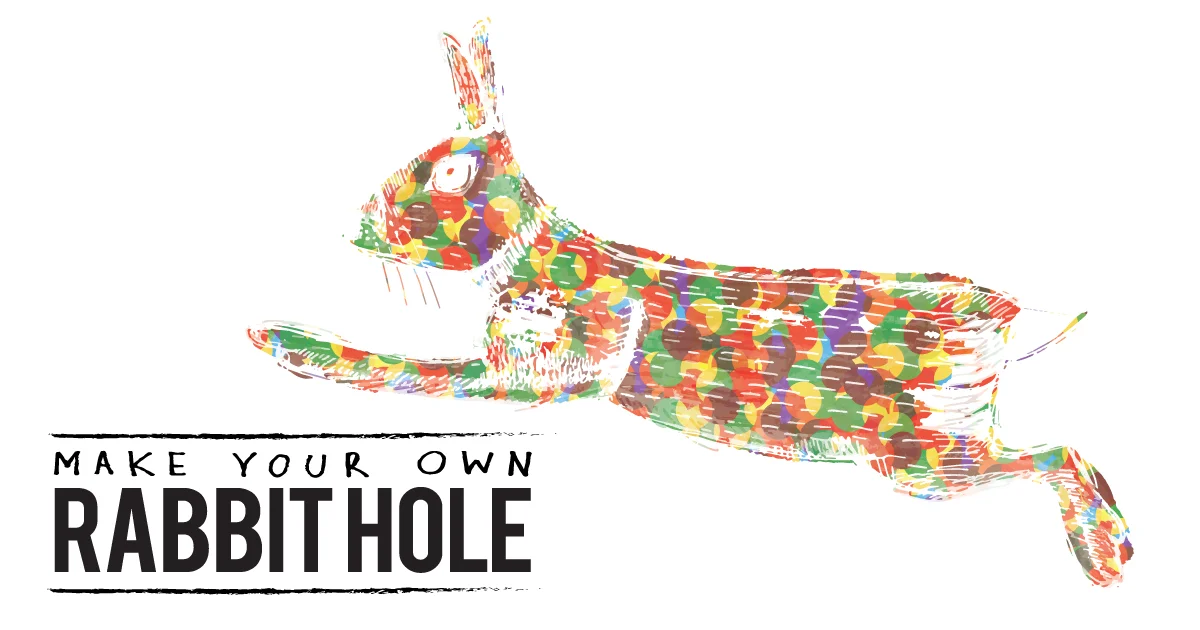


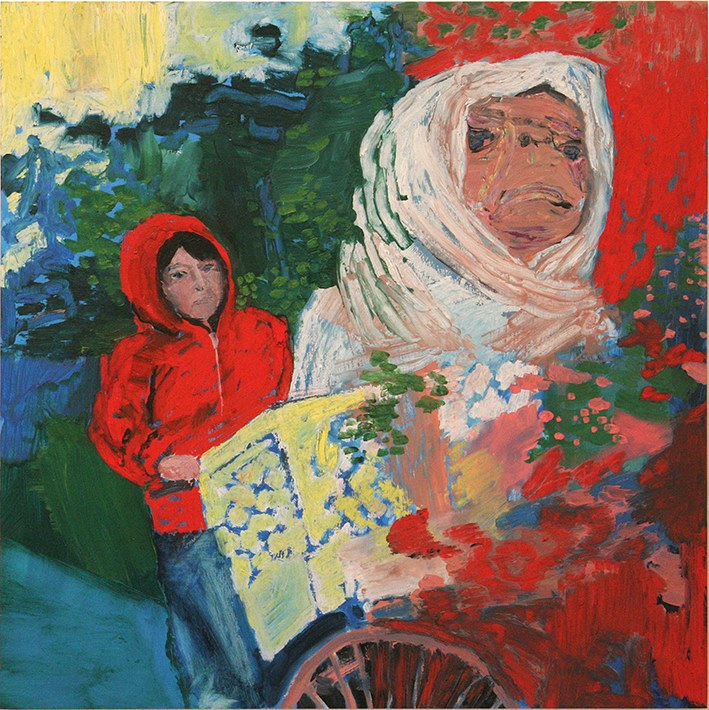

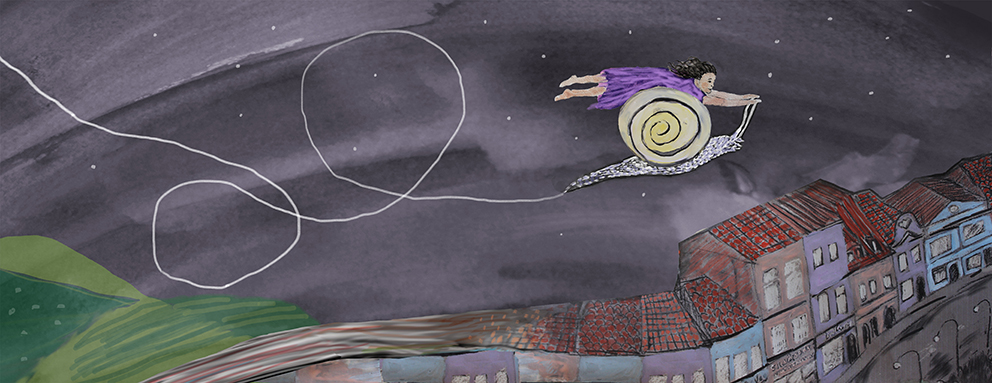
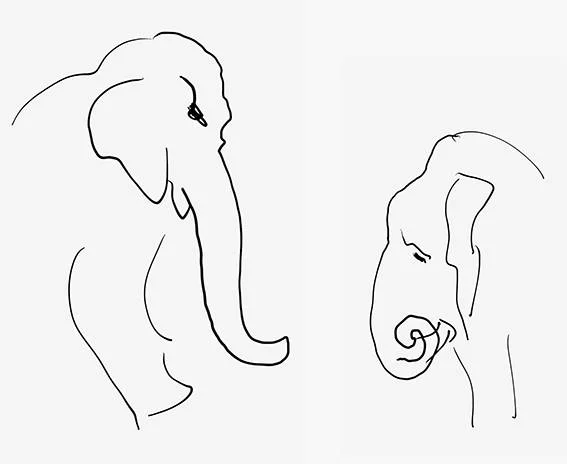
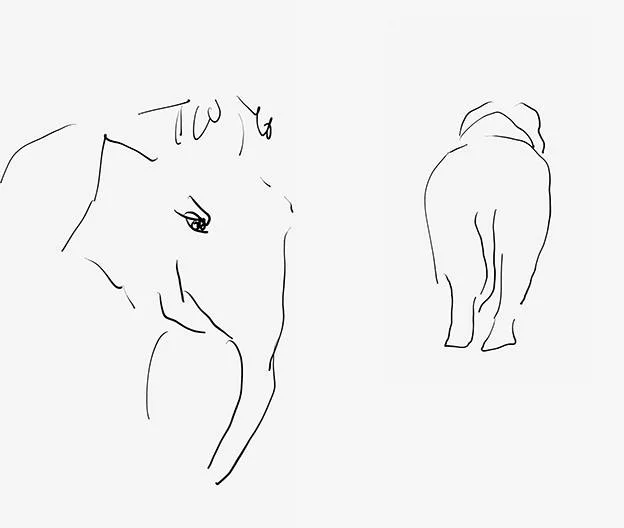












Painter Tracey Read talks about spending four weeks painting and drawing her way around Italy.